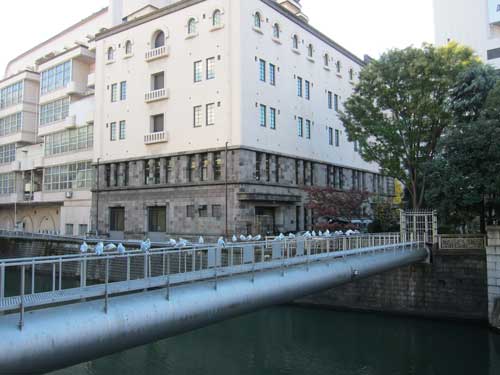
風鈴がホームレスの家を飾っています。宮下公園の下、渋谷スランブルの近くにあって、この家はとても整然としています。東京はいつも何かと隣り合わせになっていて、垂直な層になっています。例えば、半分公共の空間と空っぽの空間、デザインされた空間とデザインのない空間、住宅、スケードポード場、飲み屋、そしてバイクの駐車場。
A furin is a glass wind chime whose sound Japanese find cooling in summer; something about glass and metal striking. I was amazed to see this domestic symbol, along with a white chandelier (below), decorating two homes in this long row of wood and blue tarp cubes sheltering the homeless. (The furin is just to the right of the rolled up bamboo used to screen door).
I am struck by how incredibly orderly these living structures are, and how on a warm day when you gaze inside, the homes seem orderly and common place: tidy kitchens, matt floors, shelves and storage, on a scale just slightly smaller than what most Tokyo-ites live in.
This long alley of make-shift homes is just below Miyashita Park that paces the Yamanote line for a fe blocks. It’s just past Nonbei Yokocho and near the center of Shibuya. There was controversy over gentrification and corporate funding for city resources when the city accepted Nike sponsorship to renovate the park with design by Atelier Bow Wow. It seems the homeless merely migrated to the area just below the fenced-in skate park and fusball court.
Now it is a typically Tokyo close juxtaposition of semi-public and vacant space, design and non-design, and living, sports, drinking, and parking spaces.



